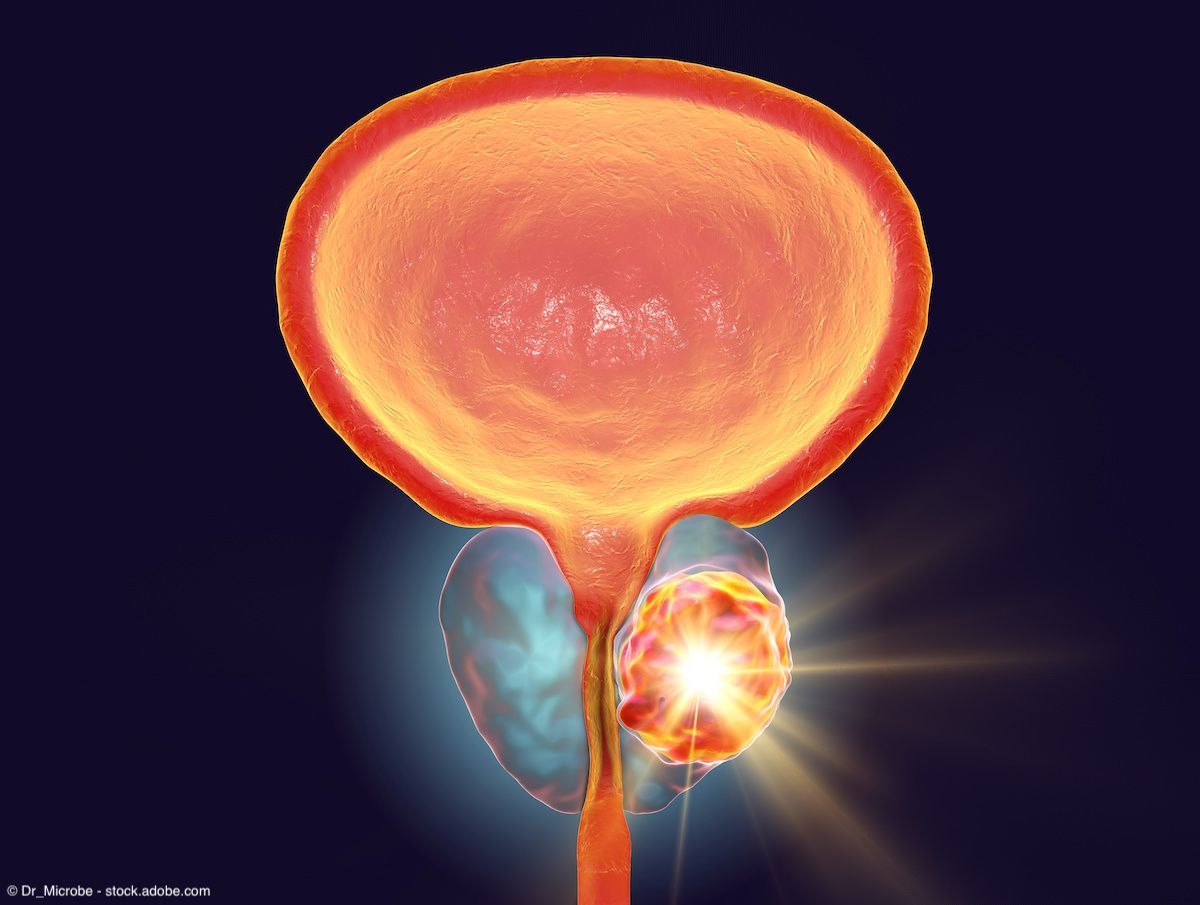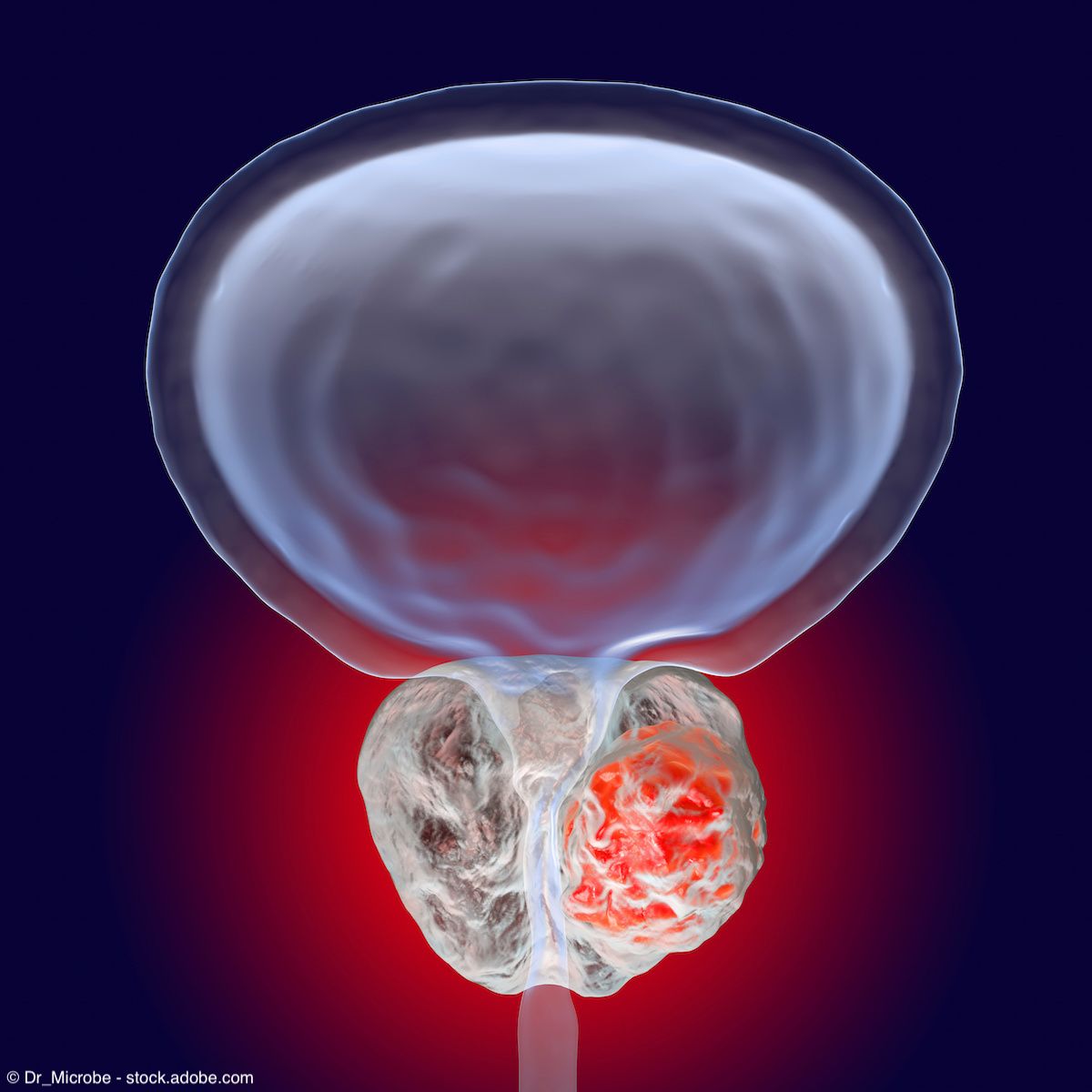News
Article
Race subgroup analysis points to clinical benefit of darolutamide in nmCRPC
Author(s):
Key Takeaways
- Darolutamide demonstrated longer treatment duration and delayed progression to metastatic CRPC compared to enzalutamide and apalutamide in Black and White patients.
- The DEAR and DEAR-EXT studies highlighted darolutamide's favorable safety profile and lower discontinuation rates in nmCRPC treatment.
In both racial cohorts, median MFS was not reached in the darolutamide group.
Real-world data on treatment of non-metastatic castration-resistant prostate cancer (nmCRPC) with darolutamide (Nubeqa) suggest that the androgen receptor inhibitor may offer stronger clinical benefits compared with enzalutamide (Xtandi) or apalutamide (Erleada) in cohorts of Black and White patients.1
Daniel J. George, MD

The data were presented at the 2025 American Society of Clinical Oncology Genitourinary Cancers Symposium in San Francisco, California. In their poster, the investigators, led by Daniel J. George, MD, director of GU Oncology at Duke Cancer Center in Durham, North Carolina, noted that real-world data reported from the DEAR study (NCT05362149) “suggested that patients treated with [darolutamide] had a longer treatment duration and delayed progression to metastatic CRPC compared with those treated with [enzalutamide] and [apalutamide]. [Darolutamide] was also shown to have a well-tolerated safety profile vs [enzalutamide] and [apalutamide].”2
The investigators also highlighted the DEAR-EXT study (NCT06013475), a retrospective chart review cohort study evaluating men with nmCRPC from the Precision Point Specialty Analytics network of urology practices in the US. That study utilized data based on a further year of patient inclusion and follow-up and also included prostate-specific antigen response, metastasis-free survival (MFS), and overall survival as outcomes.3
For the current study, the investigators wrote in their poster that they sought “to compare clinical outcomes for patients with nmCRPC treated with [darolutamide], [enzalutamide], or [apalutamide] in separate cohorts of Black and White patients.”
Men were eligible for inclusion in the study if they were at least 18 years of age and had initiated nmCRPC treatment with darolutamide, enzalutamide, or apalutamide for the first time between August 2019 and March 2023 (index date), had evidence of nmCRPC before or within 90 after the index date, and had at least 6 months of electronic medical records activity before and after the index date. Men were excluded from the analysis if they showed evidence of metastatic disease “or a treatment prescribed specifically for nmCRPC before or up to 30 days after the index date,” the authors wrote. Men were also excluded if they had a history of other primary cancers or had participated in other clinical trials.
Outcomes of the study included time to and reasons for discontinuations of initial androgen receptor inhibitor and MFS, which was defined as the time from the index date until progression to mCRPC or death.
The cohort was grouped by Black or White race according to self-reporting of race. “Descriptive statistics and time-to-event analyses were conducted using unadjusted [Kaplan-Meier] estimates and Cox proportional hazards models adjusted for baseline characteristics (age, race, insurance coverage, index year, PSA, time from nmCRPC diagnosis, and Gleason score),” the authors wrote in their abstract.
A total of 1205 patients were included in the analysis, of whom 282 were Black and 923 were White. In both racial cohorts, 41% of patients received darolutamide, 44% received enzalutamide, and 15% received apalutamide. Although baseline characteristics were generally well balanced across the treatment arms within the Black and White cohorts, the investigators did note that the enzalutamide and apalutamide groups contained more patients in earlier index years (2019-2020) in both racial cohorts vs the darolutamide group. Additionally, a Gleason score of 4-7 was more common in the darolutamide group vs the enzalutamide and apalutamide groups in both racial cohorts. Finally, there was a longer time from CRPC diagnosis to the index date in the apalutamide group in Black patients and longer time from CRPC diagnosis to the index date in the darolutamide group in White patients.
The investigators reported that treatment-emergent adverse events and disease progression/death were the most frequent reasons for treatment continuation in the Black and White cohorts. Both of these were observed less frequently in the darolutamide group vs the enzalutamide and apalutamide groups.
A total of (40.%) 114 Black patients and 429 (46.5%) White patients discontinued initial androgen receptor inhibitor treatment during the time period of the study. In both racial cohorts, the proportion of patients discontinuing treatment was lower in the darolutamide group (32.8% of Black patients and 37.9% of White patients) compared with the enzalutamide (44.8% of Black patients and 53.1% of White patients) and apalutamide (48.8% of Black patients and 50.4% of White patients) groups.
The median time to androgen receptor inhibitor discontinuation was not reached in the darolutamide group for Black and White patients. In Black patients, the median time to androgen receptor inhibitor discontinuation was 25.5 months (95% CI, 21.6-not reached) in the enzalutamide group and 29.0 months (95% CI, 10.8-not reached) in the apalutamide group. In White patients, the median time to androgen receptor inhibitor discontinuation was 26.1 months (95% CI, 22.7-32.8) for the enzalutamide group and 25.7 months (95% CI, 20.6-42.8) for the apalutamide group.
Regarding MFS, 91 (32.3%) Black patients experienced an MFS event during the study period compared with 390 (42.3%) White patients. In both racial cohorts, median MFS was not reached in the darolutamide group. In Black patients, median MFS was 47.7 months (95% CI, 32.1-not reached) in the enzalutamide group and 34.5 months (95% CI, 20.8-not reached) in the apalutamide group. In White patients, median MFS was 29.2 months (95% CI, 23.9-33.6) for the enzalutamide group and 32.2 months (95% CI, 24.7-not reached) for the apalutamide group.
“This race subgroup analysis demonstrates potentially greater clinical benefits of [darolutamide] vs [enzalutamide] and [apalutamide] among separate cohorts of Black and White patients,” the investigators wrote in their conclusion.
REFERENCES
1. George D, Morgans A, Khan N, et al. Real-world use and outcomes of darolutamide (DARO), enzalutamide (ENZA), and apalutamide (APA) for nonmetastatic castration-resistant prostate cancer (nmCRPC): Race subgroup analysis. J Clin Oncol 43, 2025 (suppl 5; abstr 158). doi:10.1200/JCO.2025.43.5_suppl.158
2. George DJ, Morgans AK, Constantinovici N, et al. Androgen receptor inhibitors in patients with nonmetastatic castration-resistant prostate cancer. JAMA Netw Open. 2024;7(8):e2429783. doi:10.1001/jamanetworkopen.2024.29783
3. George DJ, Morgans AK, Khan N, et al. US real-world utilization and outcomes of darolutamide, enzalutamide, and apalutamide for nonmetastatic castration-resistant prostate cancer (nmCRPC): DEAR-EXT study. JCO Oncol Pract 20, 2024 (suppl 10; abstr 399). doi:10.1200/OP.2024.20.10_suppl.399
















